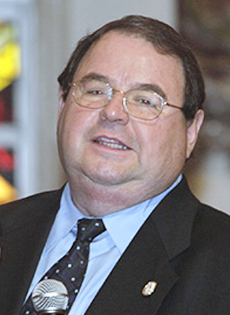
History of the eucharistic celebration IX: start of the Middle Ages
Monday, June 29, 2020
*Rogelio Zelada
The great challenge of the barbarian invasions led the Church to adopt new pastoral methods and to embark on a long process in its interior and liturgical lives, characterized by the movement from improvised prayer to fixed forms in which the faith of the Church was clarified and cemented.
The eucharistic prayer gradually took on fixed and protected texts. The readings to be proclaimed on Sundays and holy days were progressively established, and then the changeable texts were established: the Preface, the Collect, the Prayer over the Offerings and those after Communion.
It is very helpful that within the Roman Church there is a growing mistrust of improvisation; to safeguard orthodoxy, the local council is required to approve every liturgical form. As a pastoral measure, the bishops delegate many of the functions of their pastoral work to the priests. From then on, they are entrusted with presiding at the Eucharist and the administration of the sacraments, except for confirmation, which will be artificially separated from the Rites of Initiation; the pastor will celebrate baptism; and later the bishop will administer confirmation when his time allows.
Therefore, the natural order of Christian initiation — baptism-confirmation-Eucharist — remains until today as baptism-reconciliation or confession-Eucharist-confirmation, something that the Eastern Churches never accepted and that the current reform of the rite of initiation (RCIA) tries to amend. The presbyters will also be the witnesses in the sacrament of matrimony and will administer last rites and reconciliation, but the bishop will also retain for himself the administering of Holy Orders.
With the cultural fusion of local populations with the barbarians, the use of Latin as a living language is lost, and the choir takes on the entirety of the singing, which becomes more elaborate and ornate. The modified Roman chant will be called Gregorian chant, because the work of compiling and revising it was the initiative of Pope Gregory the Great. It is not a very outstanding time for the practice and the sacramental life because the faithful are moving away from frequent communion. The preaching of the priests contributes to this: "The altar on which the divine victim is immolated is truly fearsome" (St. John Chrysostom), as is the rigidity of the procedures for accessing forgiveness within the norms of the sacrament of penance. As the communion procession is reduced, it ends up disappearing along with the presentation of the gifts.
Until then, the liturgical vestments of the clergy did not differ much from those of the faithful. Perhaps a little more special and elaborate for the bishop, but they were all an inheritance from the noble Roman vestments. The appearance of the new believers, with their clothing made of furs, meant that the use of the alb (a basic piece of clothing consisting of a white full-length tunic), and the colobus (a large circular cloak covering the chest and back, which was the origin of the chasuble), was gradually adopted and remained for the celebration of the Eucharist.


Comments from readers